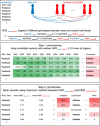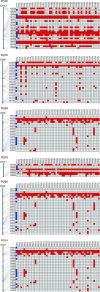HDR: a statistical two-step approach successfully identifies disease genes in autosomal recessive families
- PMID: 27357426
- PMCID: PMC5411490
- DOI: 10.1038/jhg.2016.85
HDR: a statistical two-step approach successfully identifies disease genes in autosomal recessive families
Abstract
In the search for sequence variants underlying disease, commonly applied filtering steps usually result in a number of candidate variants that cannot further be narrowed down. In autosomal recessive families, disease usually occurs only in one generation so that genetic linkage analysis is unlikely to help. Because homozygous recessive mutations tend to be inherited together with flanking homozygous variants, we developed a statistical method to detect pathogenic variants in autosomal recessive families: We look for differences in patterns of homozygosity around candidate variants between patients and control individuals and expect that such differences are greater for pathogenic variants than random candidate variants. In six autosomal recessive mitochondrial disease families, in which pathogenic homozygous variants have already been identified, our approach succeeded in prioritizing pathogenic mutations. Our method is applicable to single patients from recessive families with at least a few dozen control individuals from the same population; it is easy to use and is highly effective for detecting causative mutations in autosomal recessive families.
Conflict of interest statement
The authors declare no conflict of interest.
Figures


References
MeSH terms
LinkOut - more resources
Full Text Sources
Other Literature Sources
